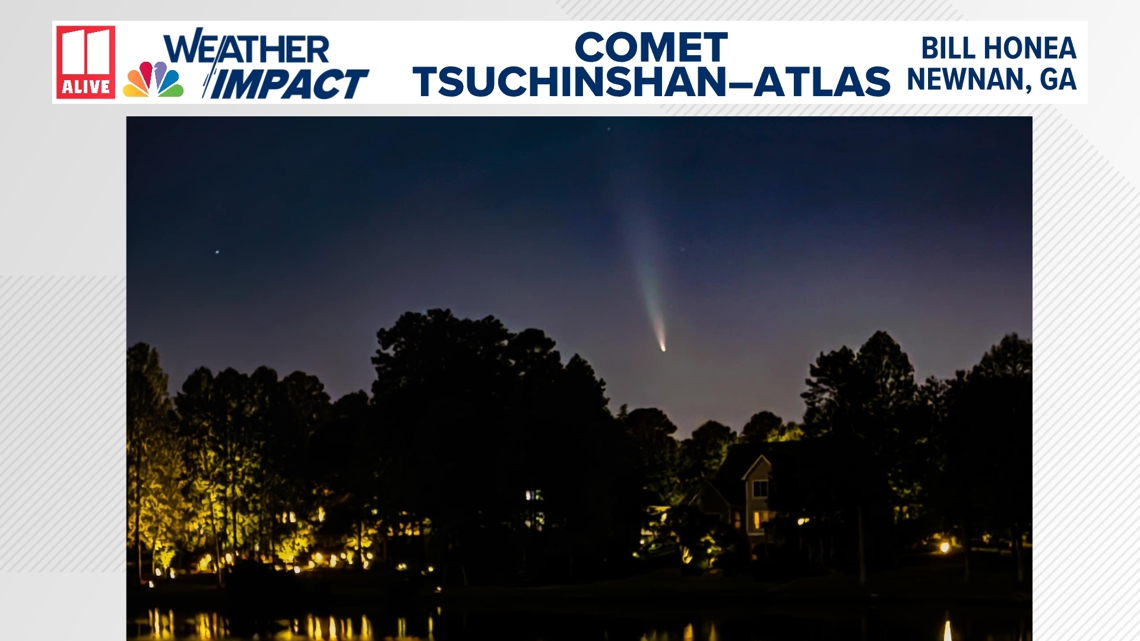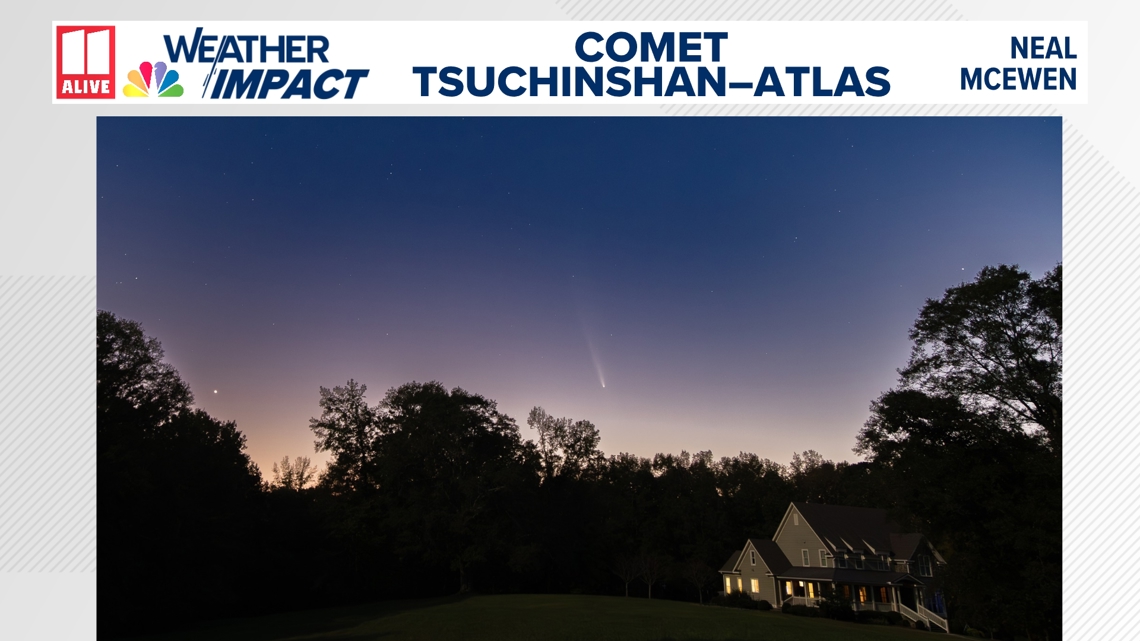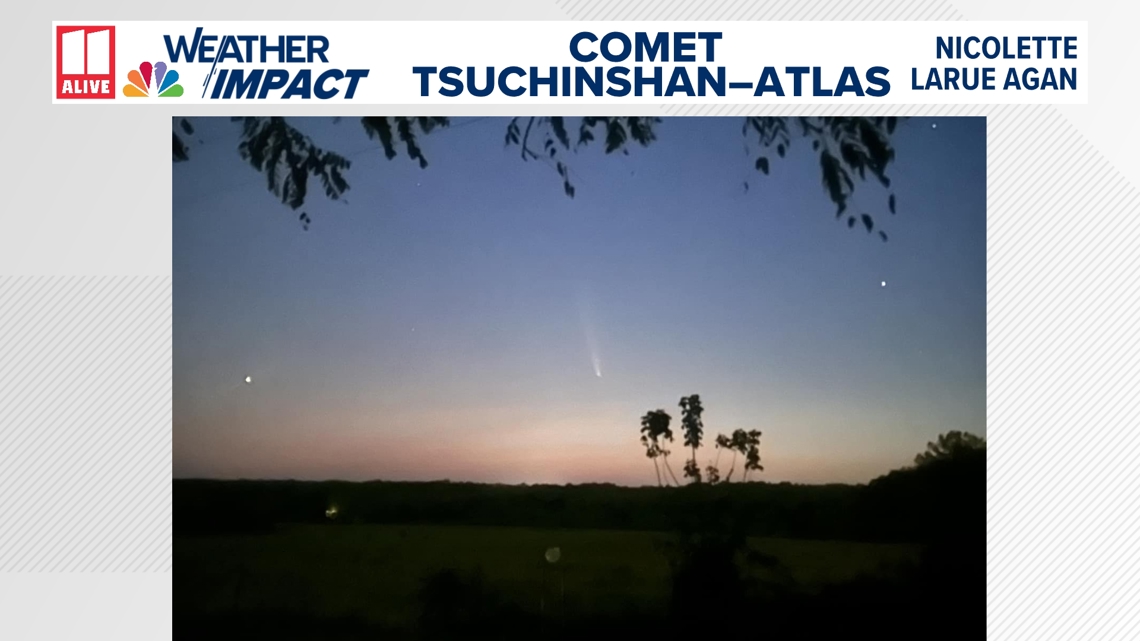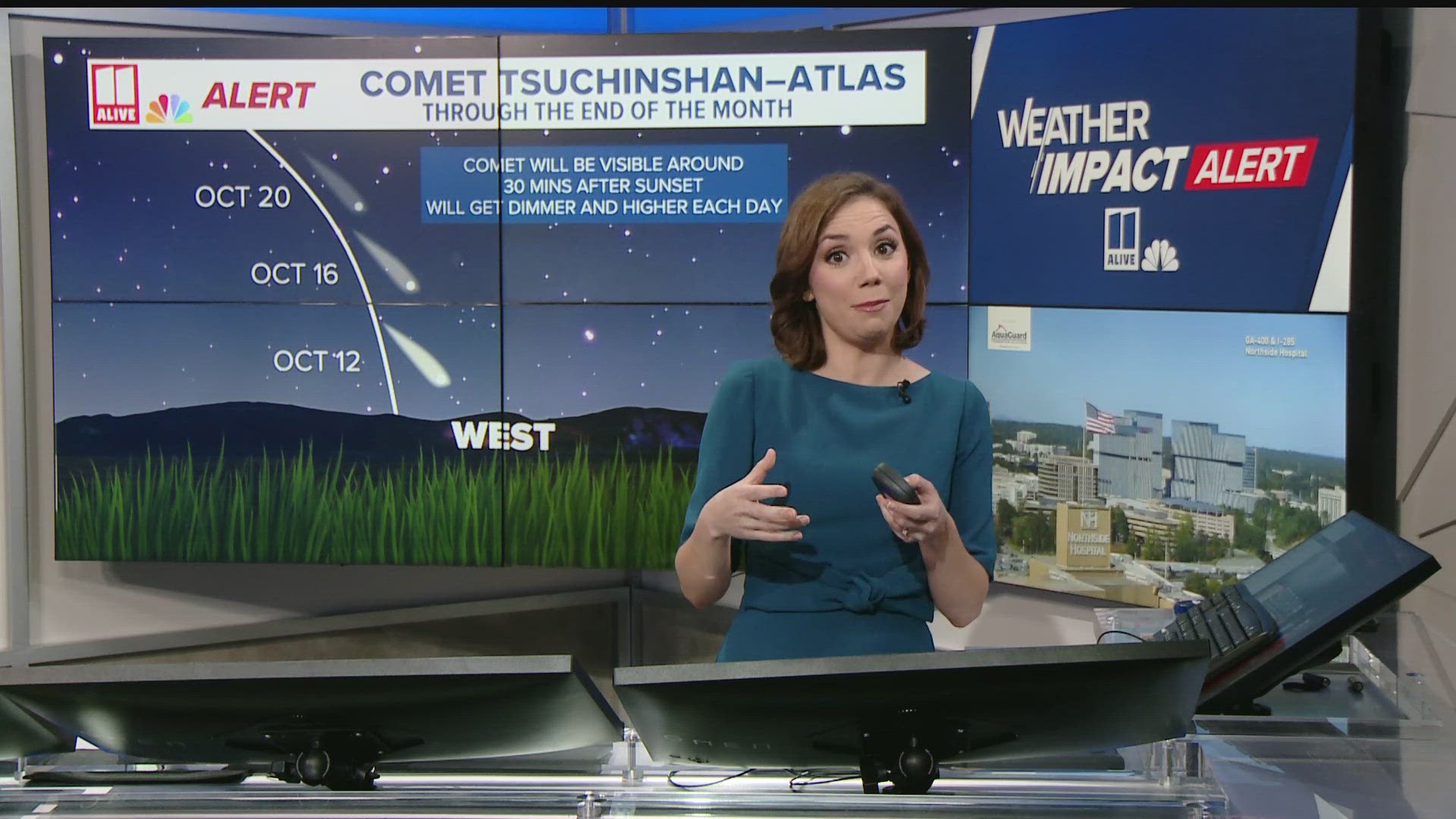ATLANTA — Through the weekend of Saturday, Oct. 19 and Sunday, Oct. 20, you'll be able to see a rare comet in the sky each evening above north Georgia.
How to see Comet Tsuchinshan-ATLAS
Comet C/2023 A3, known as Comet Tsuchinshan-ATLAS, will be visible each evening about 30 minutes after sunset and can be seen in the western sky.
Photos from Comet Tsuchinshan-ATLAS
Several 11Alive Weather Impact Community members spotted the comet over north Georgia on Sunday evening, October 13. Bill Honea snapped the photo below from Newnan.


Also, on Sunday evening, Neal McEwen sent a great photo!


And out in Bowdon, Nicolette LaRue Agan captured this photo just after sunset on Sunday.


When is the best time to see Comet Tsuchinshan-ATLAS?
The sooner, the better! Later in the week, the comet will appear higher and dimmer in the sky.
Each evening, look in the western sky about 30 minutes after sunset. You should spot it easily.
This week will be mostly clear and chilly each evening, as a fall airmass takes hold of north Georgia. This will help to keep cloud cover at a minimum overall.


Where does Comet Tsuchinshan-ATLAS come from?
Georgia Tech professor and planetary astronomer Dr. James Wray explained the comet's origins to our sister station, WCNC.
"The human mind may find it difficult to conceptualize: a cosmic cloud so colossal it surrounds the Sun and eight planets as it extends trillions of miles into deep space," Wray wrote in the report. "The spherical shell known as the Oort Cloud is, for all practical purposes, invisible. Its constituent particles are spread so thinly, and so far from the light of any star, including the Sun, that astronomers simply cannot see the cloud, even though it envelops us like a blanket."
In the report, Wray also wrote:
It is also theoretical. Astronomers infer the Oort Cloud is there because it’s the only logical explanation for the arrival of a certain class of comets that sporadically visit our solar system. The cloud, it turns out, is basically a gigantic reservoir that may hold billions of icy celestial bodies.
Two of those bodies will pass by Earth in the days leading up to Halloween. Tsuchinshan-ATLAS, also known as Comet C/2023 A3, will be at its brightest, and likely visible to the naked eye, for a week or two after Oct. 12, the day it’s closest to Earth – just look to the western sky shortly after sunset. As the days pass, the comet will get fainter and move to a higher part of the sky.
The second comet, C/2024 S1 (ATLAS), just discovered on Sept. 27, should be visible around the end of October. The comet will pass closest to Earth on Oct. 24 – look low in the eastern sky just before sunrise. Then, after swinging around the Sun, the comet may reappear in the western night sky right around Halloween. It’s possible, however, that it could disintegrate, in part or in whole, as sometimes happens when comets pass by the Sun – and this one will come within 1 million miles (1.6 million kilometers) of our star.
You can read more of Wray's write up on the Oort Cloud and Comet Tsuchinshan-ATLAS online here.

